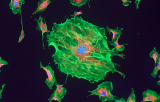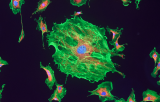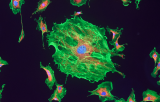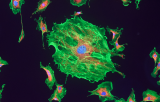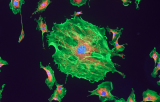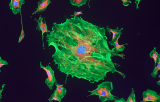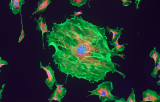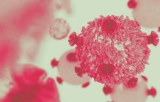
In situ hybridization probes - Non-Hodgkin lymphomas (NHL)
Non-Hodgkin lymphoma (NHL) is a group of white blood cell cancers that includes all types of lymphoma except Hodgkin's lymphomas. The difference between Hodgkin and non-Hodgkin lymphomas is that the first one contains abnormal cells called « Reef-Sternberg cells ».
Lymphomas can start anywhere in the body where lymph tissue is found (lymph nodes, spleen, bone marrow, thymus, adenoids, tonsils and digestive tract).
There are many different types of non-Hodgkin lymphoma (NHL). The WHO system groups lymphomas are based on:
- The type of lymphocyte the lymphoma starts in : B or T
- How the lymphoma looks under a microscope
- The chromosome features of the lymphoma cells
- The presence of certain proteins on the surface of the cancer cells
The most common lymphoma is the B-cell lymphoma (around 85% of cases). His prevalence is high compare to the T-cell lymphoma (around 15% of cases).
In adults, the most common types of NHL are diffuse large B-cell lymphoma (DLBCL, high grade) and follicular lymphoma (low grade). In children, the most common type is Burkitt lymphoma (high grade).
There are different causes to the NHL :
- Weakened immune system : HIV, people taking immunosuppressants (autoimmune diseases, after organ transplant)
- Infections : Helicobacter pylori, HTLV-1, hepatitis C, EBV and HHPV8
- Family history


